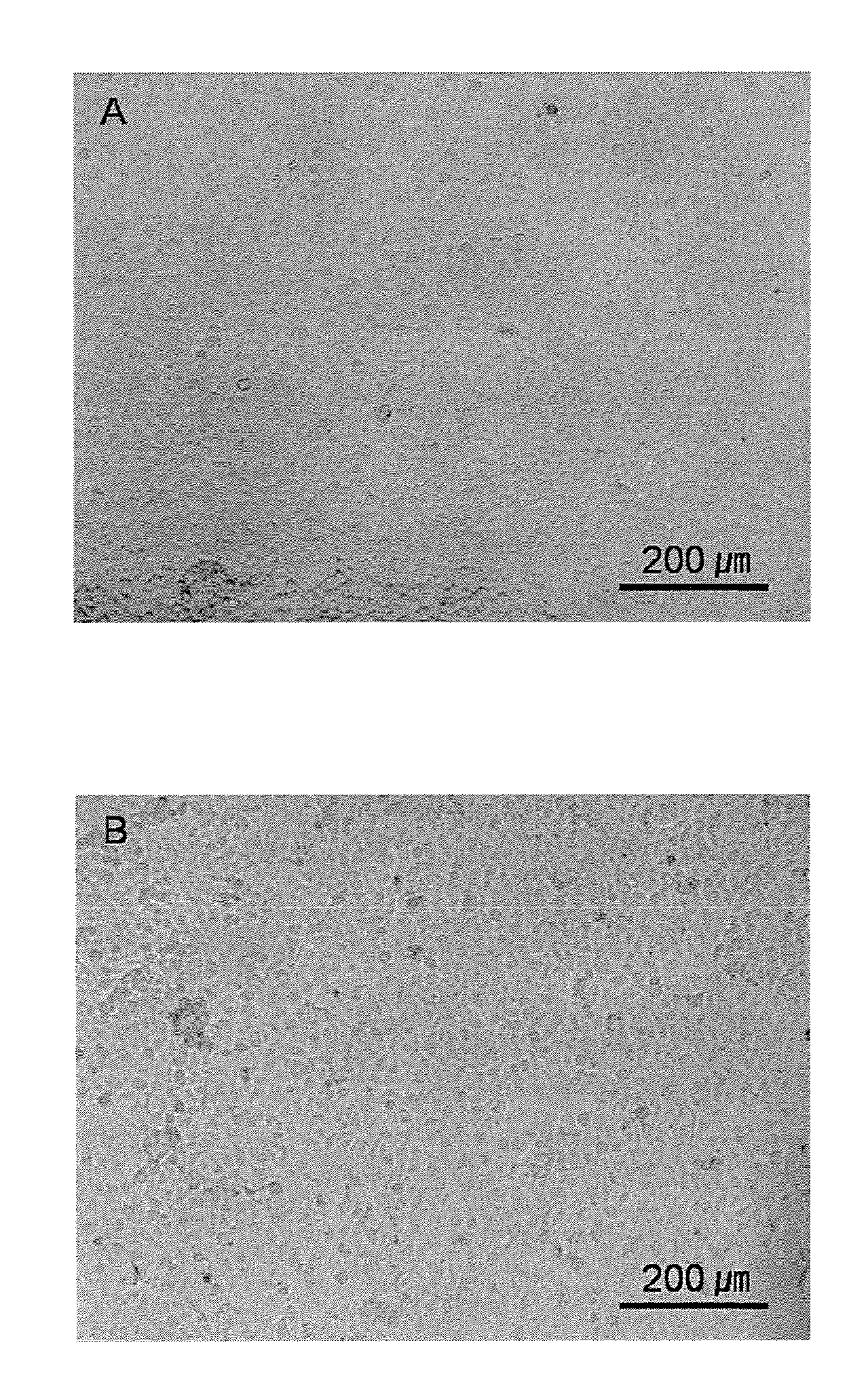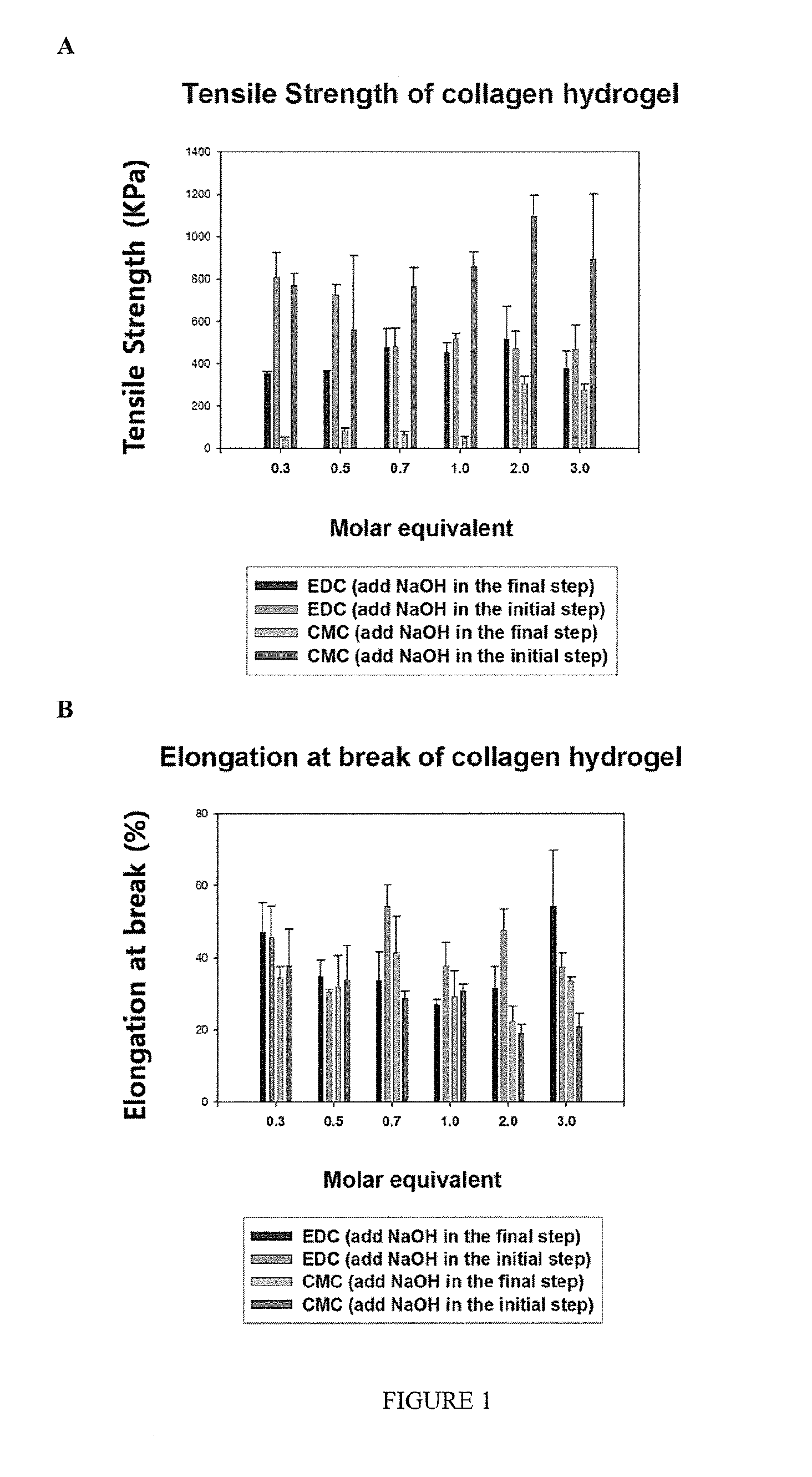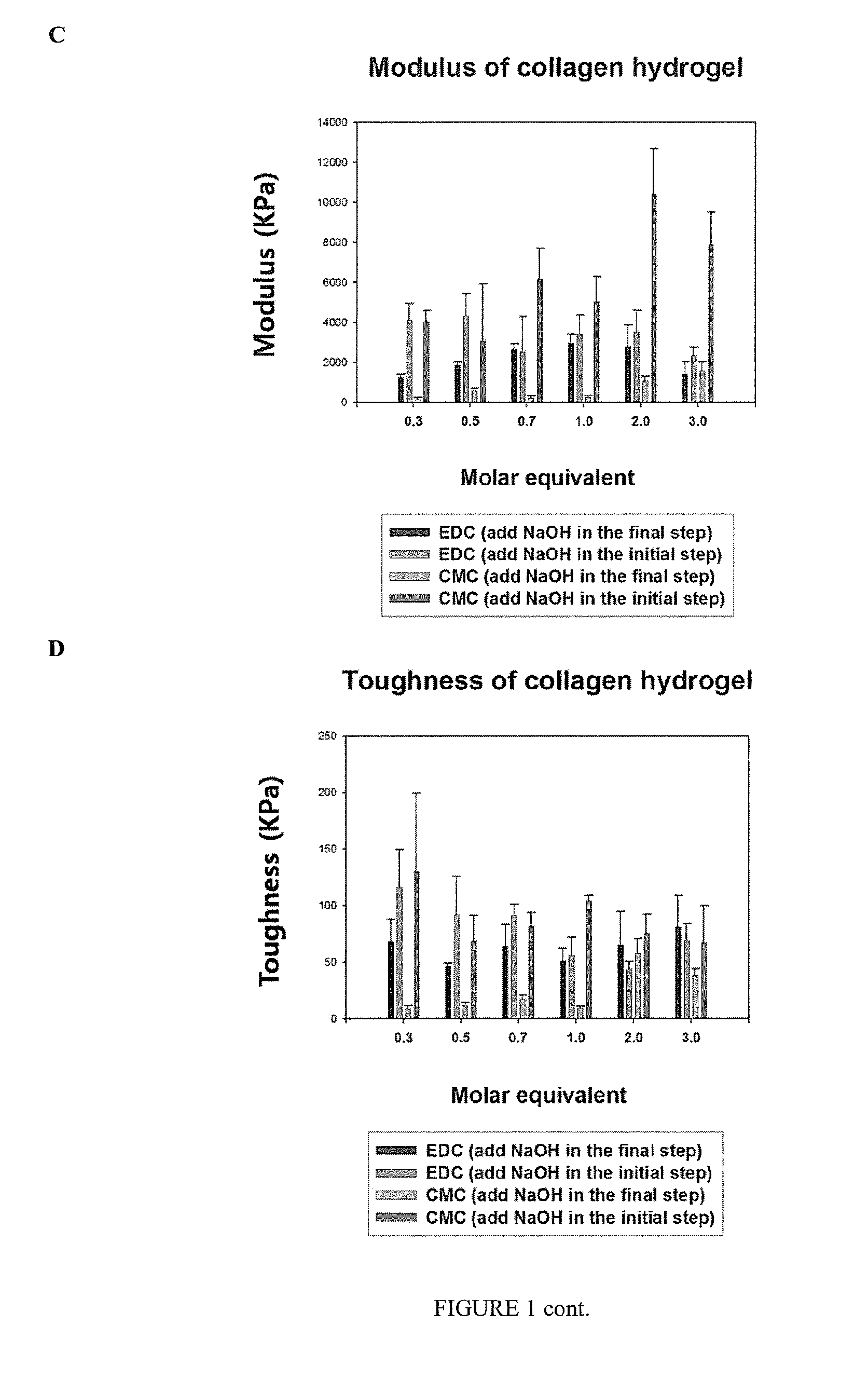Crosslinked Hydrogels and Related Method of Preparation
a cross-linked hydrogel and biopolymer technology, applied in the field of hydrogels, can solve the problems of cytotoxic reaction upon degradation of collagen, toxic ga (related) molecules, potential toxic effects of residual molecules when biomaterials are exposed to biological environments, etc., and achieve the effect of slowing down the cross-linking reaction of carbodiimid
- Summary
- Abstract
- Description
- Claims
- Application Information
AI Technical Summary
Benefits of technology
Problems solved by technology
Method used
Image
Examples
example 1
Comparison of EDC to CMC Crosslinker
[0115]CMC (N-Cyclohexyl-N′-(2-morpholinoethyl) carbodiimide metho-p-toluenesulfonate) includes a cyclohexyl and a morpholinoethyl group. CMC was selected as a non-toxic crosslinker for comparing the gelation speed of collagen solution, in comparison to gelation using EDC as a crosslinker, because of its bulky groups. The collagen hydrogels were fabricated using a 10% collagen solution and crosslinker (EDC, CMC). The properties and in vitro biocompatibility of the resulting hydrogels were compared.
Materials and Methods
[0116]Freeze-dried Type I porcine collagen was purchased by Nippon Meat Packers Inc. (Tokyo, Japan). Morpholinoethanesulfonic acid (MES; EMD Chemicals Inc., USA) was dissolved in deionized water to form a 0.625 M MES buffer solution. 1-Ethyl-3-(3-dimethyl aminopropyl) carbodiimide hydrochloride (EDC) and N-Cyclohexyl-N′-(2-morpholinoethyl) carbodiimide metho-p-toluenesulfonate (CMC) were supplied by Sigma. N-hydroxysuccinimide (NHS) w...
example 2
CMC Crosslinked Type III Collagen Hydrogels
[0165]A series of collagen hydrogels was prepared using the methods set out above in Example 1 and as described in the applicant's previous patent applications International PCT Publication Nos. WO 2006 / 015490 and WO 2007 / 028258, both of which are incorporated herein in their entirety. In each case, where EDC was previously used as the crosslinker it was replaced with the CMC crosslinker.
[0166]The fabricated hydrogels included the following components:[0167]13.7% type III collagen+1.0 CMC molar equivalent[0168]13.7% type III collagen+0.4 CMC molar equivalent[0169]13.7% type III collagen+0.4 CMC molar equivalent+MPC (2-methacryloyloxyethyl phosphorylcholine)+PEG (MES) (polyethylene glycol (morpholinoethanesulfonic acid))[0170]13.7% type III collagen+0.4 CMC molar equivalent+MPC+PEG (water)[0171]18% type III collagen+0.4 CMC molar equivalent[0172]18% type III collagen+0.4 CMC molar equivalent+MPC+PEG (water)
[0173]In the case of MPC and PEG co...
example 3
CMC Crosslinked Collagen Hydrogels for Corneal Substitutes
[0176]In this example, an evaluation and comparison of mechanical and optical properties and in vitro biocompatibility of collagen hydrogel cross-linked with 1-ethyl-3-(3-dimethyl aminopropyl) carbodiimide hydrochloride (EDC) and the sterically bulky N-Cyclohexyl-N′-(2-morpholinoethyl) carbodiimide metho-p-toluenesulfonate (CMC) in combination with N-hydroxysuccinimide (NHS) was conducted. Various molar equivalents of carbodiimide cross-linkers were studied to determine the optimal conditions in the fabrication of collagen hydrogels. Collagen hydrogels were composed of 10% porcine type I collagen cross-linked with EDC and NHS or CMC and NHS. Various measurements such as tensile strength, water contents, optical properties and thermal analysis were carried out on the collagen hydrogels. In addition, immortalized corneal epithelial cells, corneal endothelial cells and nerve cells from chicken embryo were cultured on the collage...
PUM
| Property | Measurement | Unit |
|---|---|---|
| temperature | aaaaa | aaaaa |
| water soluble | aaaaa | aaaaa |
| water-soluble | aaaaa | aaaaa |
Abstract
Description
Claims
Application Information
 Login to View More
Login to View More - R&D
- Intellectual Property
- Life Sciences
- Materials
- Tech Scout
- Unparalleled Data Quality
- Higher Quality Content
- 60% Fewer Hallucinations
Browse by: Latest US Patents, China's latest patents, Technical Efficacy Thesaurus, Application Domain, Technology Topic, Popular Technical Reports.
© 2025 PatSnap. All rights reserved.Legal|Privacy policy|Modern Slavery Act Transparency Statement|Sitemap|About US| Contact US: help@patsnap.com



